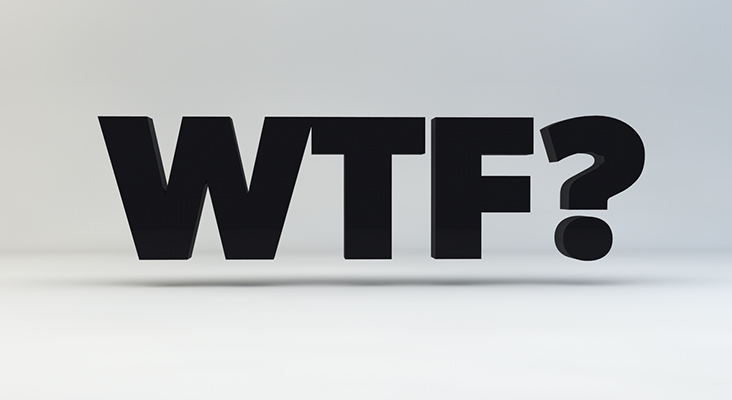Save 50% on a 3-month Digiday+ membership. Ends Dec 5.

This article is a WTF explainer, in which we break down media and marketing’s most confusing terms. More from the series →
Technology is revolutionizing the way online advertising is bought and sold, and so-called demand-side platforms have played a major part in driving that change. Here’s a primer — in as plain English as possible — on what DSPs are, and what they actually do:
I keep hearing about demand-side platforms. What are they?
A demand-side platform is a piece of software used to purchase advertising in an automated fashion. DSPs are most often used by advertisers and agencies to help them buy display, video, mobile and search ads.
OK. So why do they matter?
Historically digital ads were bought and sold by human ad buyers and salespeople, who are expensive and unreliable. DSPs help make that process cheaper and more efficient by removing humans from parts of the process, as well as the need to negotiate ad rates and to manually fax ad insertion orders.
Got it. But how do they actually work?
It’s complicated. The short version is that DSPs allow advertisers to buy impressions across a range of publisher sites, but targeted to specific users based on information such as their location and their previous browsing behavior. Publishers make their ad impressions available through marketplaces called ad exchanges, and DSPs automatically decide which of those impressions it makes the most sense for an advertiser to buy. Often the price of those impressions is determined by a real-time auction, through a process known as real-time bidding. That means there’s no need for human salespeople to negotiate prices with buyers, because impressions are simply auctioned off to the highest bidder. That process takes place in milliseconds, as a user’s computer loads a webpage.
Wait, isn’t that what ad networks do?
Yes, to an extent. DSPs incorporate much of what ad networks have previously offered, including access to a wide range of inventory and targeting capabilities. But DSPs say the advantage of using their offerings instead of ad networks is the ability to buy, serve and track ads using one central tool, and to optimize campaigns more easily as a result. It’s all about the data, they say. Ad networks typically mark up the media they sell, too, whereas DSPs started life charging a simple fee for facilitating a transaction.
So DSPs are replacing ad networks?
Sort of. The days of the traditional ad network model might be numbered, but that doesn’t mean ad networks are dead. In reality, the lines between ad networks and DSPs are simply disappearing. Threatened by the rise of DSPs and ad exchanges, almost all ad networks now offer some sort of DSP-like product or real-time bidding capability. Meanwhile, many companies that started life as DSPs are beginning to look a lot like ad networks, buying up inventory, repackaging it, and reselling it to advertisers at a premium. According to many in the industry, DSPs are simply the next generation of ad networks.
If DSPs are buying ads now, what does that mean for human ad buyers?
It means there will be fewer of them. Publishers are making more of their inventory available through exchanges, and many advertisers would rather purchase ads using DSPs because it’s more cost efficient to do so. However, human input will always be required to help optimize campaigns and formulate ad strategies. It’s at the transactional level that fewer humans will be required.
So DSPs are replacing agencies, then?
According to some, yes. DSPs now frequently work directly with advertiser clients, effectively replacing agencies when it comes to buying media. Clients report that they still look to agencies for strategy and consultancy but are beginning to look to other third parties, including DSPs, to help them actually purchase their ads.
What are the major demand-side platforms?
Vendors that currently sell DSP technology include Google’s Invite Media, MediaMath, Turn, DataXu, X+1, and many others. Some DSPs are focused on specific channels, such as mobile or video. Some agencies operate their own buying platforms, often knows as trading desks, using technology licensed from some of the companies above.
Download Digiday’s complete WTF Programmatic guide, including 11 explainers detailing the ins and outs of programmatic advertising.
Image via Shutterstock
More in Media

AI-powered professional learning and the battle vs. ‘workslop’: Inside Deloitte’s Scout
Deloitte last month launched Scout as part of its Project 120, the company’s $1.4 billion investment in professional development.

‘The Big Bang has happened’: Reach gets proactive on AI-era referrals, starting with subscriptions
This week, the publisher of national U.K. titles Daily Mirror, Daily Express and Daily Star, is rolling out its first paid digital subscriptions – a big departure from the free, ad-funded model it’s had throughout its 120-year history.

Arena Group, BuzzFeed, USA Today Co, Vox Media join RSL’s AI content licensing efforts
Arena Group, BuzzFeed, USA Today Co and Vox Media are participating in the RSL Collective’s efforts to license content to AI companies.






